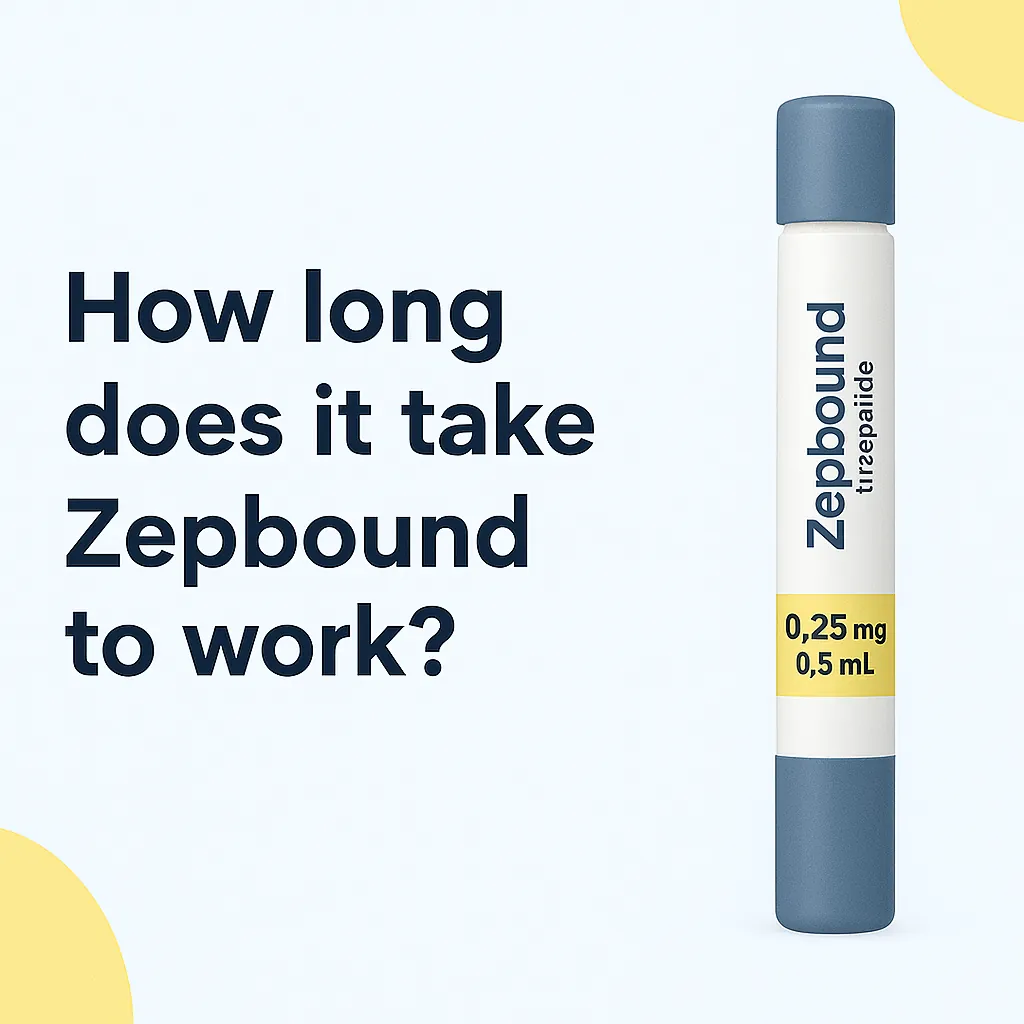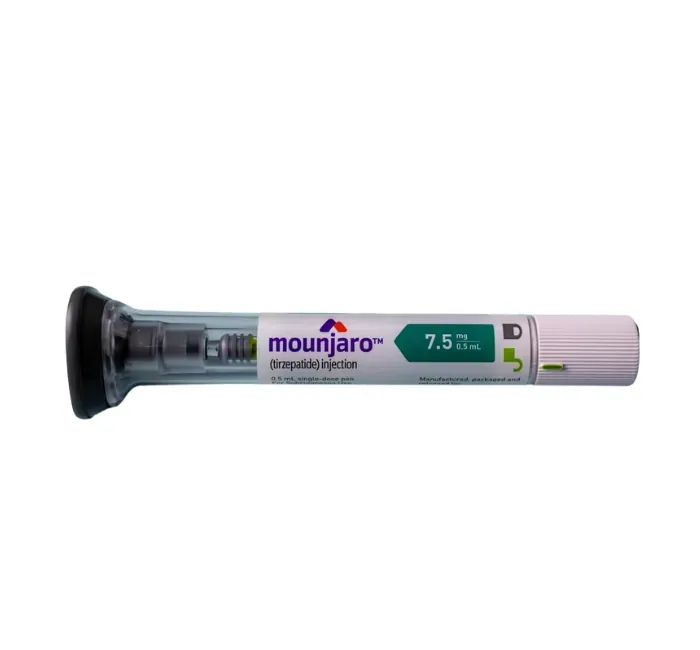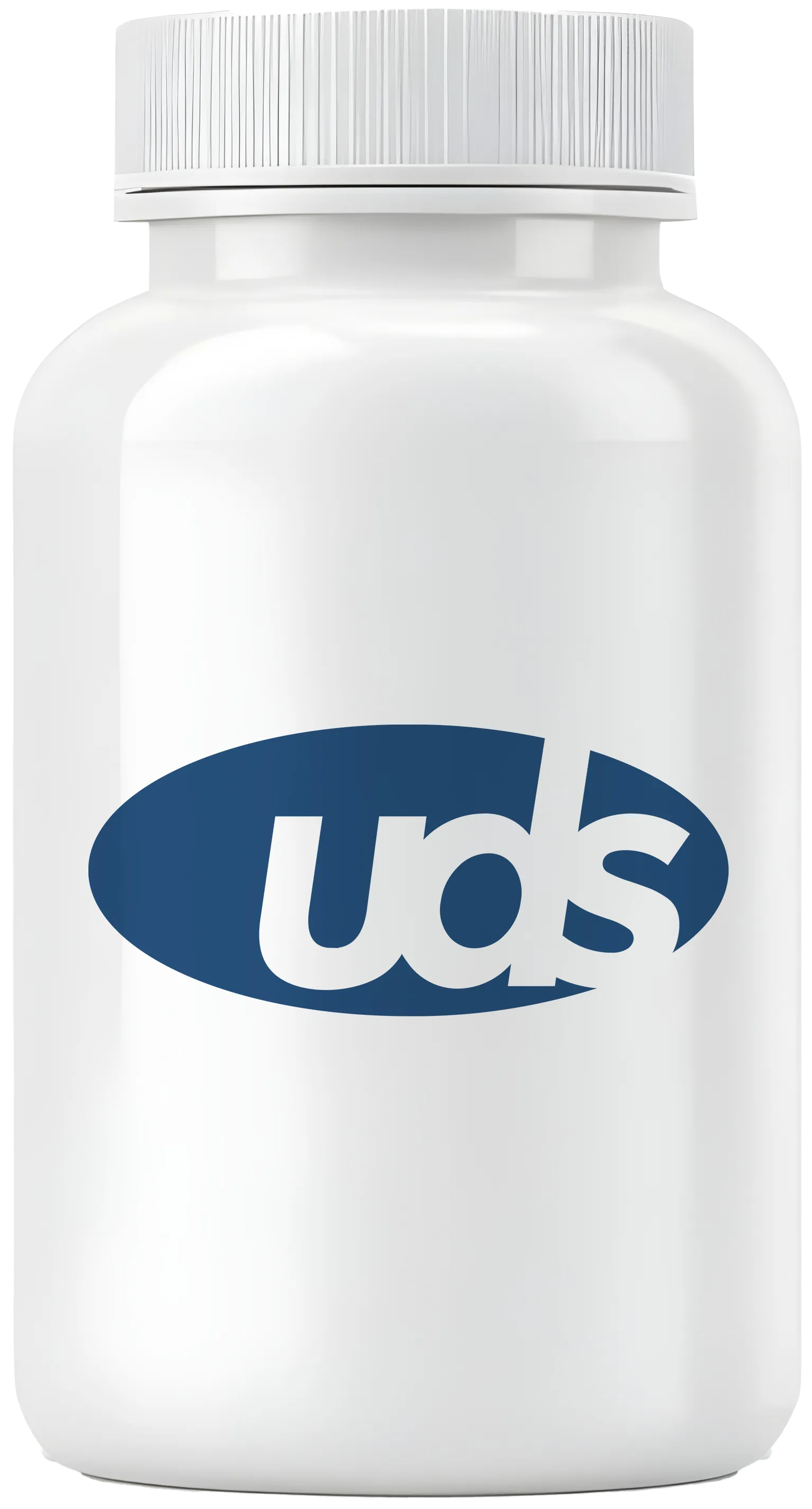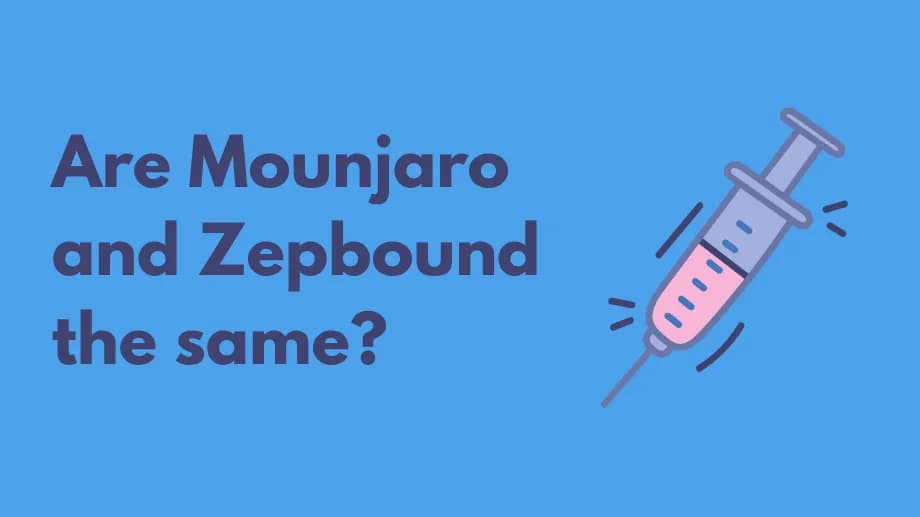How long does it take Zepbound to work?

If you are one of the 40% of Americans who are considered obese, you may have been prescribed a weight loss drug such as Zepbound (tirzepatide) to be taken along with diet and exercise. It is a weekly injection you give under the skin of your thigh, belly, or the back of your upper arm. Zepbound has been an effective treatment for weight loss, with some people losing over 26% of their body weight.
While it will begin to work after your first dose, it could be a few weeks until you start to feel changes in your appetite and sometimes a few weeks more until you begin to see weight loss results. This could be because you will start out at a low dose of Zepbound and then increase it as needed after being on that dose for 4 weeks. You do this to help avoid side effects such as nausea, vomiting, and diarrhea. Your weight loss will also depend on how well you are sticking to your diet and exercise routine. Your healthcare provider will monitor your progress during treatment to if your weight management plan is working for you.
Keep reading and hear answers to some frequently asked questions about Zepbound.
Zepbound FAQs
What is Zepbound used for?
Zepbound (tirzepatide) is brand name medication that is FDA-approved along with increased physical activity and a reduced-calorie diet for chronic weight management in adults with a starting body mass index (BMI) of:
- 30 kg/m^2 or higher (obesity)
- 27 kg/m^2 or higher (overweight) with at least one weight-related condition such as high cholesterol, high blood pressure (hypertension), type 2 diabetes, heart disease, or obstructive sleep apnea.
How does Zepbound cause weight loss?
Tirzepatide, the active ingredient in Zepbound, is a glucagon-like peptide-1 (GLP-1) and glucose-dependent insulinotropic polypeptide (GIP) receptor agonist. It works by acting like GLP-1 and GIP, 2 hormones released in your gut that are involved in the regulation of blood sugar and appetite. GLP-1 and GIP target areas in your brain to help decrease appetite and slow down digestion to help you feel full faster and longer. This can help you eat less and is what makes Zepbound a good weight loss medication. They also stimulate your pancreas to release insulin, which reduces your blood sugar levels.
What are the side effects of Zepbound?
The most common side effects of Zepbound in clinical trials when compared to placebo include:
- Nausea
- Diarrhea
- Vomiting
- Indigestion
- Constipation
Some other possible side effects of Zepbound include:
- Burping
- Fatigue
- Stomach pain
- Hair loss
- Injection site reactions
- Dizziness
Zepbound may also cause more serious side effects including:
- Serious allergic reactions, including:
- Hives
- Swelling of your throat and tongue
- Trouble breathing
- Increased risk of thyroid cancer or thyroid tumors.
- Pancreatitis (inflammation of your pancreas).
- Kidney damage including kidney failure.
- Gallbladder problems including gallstones.
- Hypoglycemia (dangerously low blood sugar).
- Vision changes in people with type 2 diabetes (diabetic retinopathy).
- Worsening depression or suicidal thoughts.
Disclaimer: These are not all of the possible adverse events of Zepbound. You should always seek medical advice from a healthcare professional for any questions or concerns about your medical condition or treatment. You should also read all the patient information, including your Medication Guide that comes with Zepbound. You can report side effects to the FDA at 1-800-FDA-1088 or www.fda.gov/medwatch.
Are there Boxed Warnings with Zepbound?
The Food and Drug Administration (FDA) recommends people who have a personal or family history of medullary thyroid cancer (MTC) should not use Zepbound along with people with Multiple Endocrine Neoplasia syndrome type 2 (MEN 2). You should also avoid this medication if you are allergic to tirzepatide or any inactive ingredient in this product.
Shop Medications
What precautions are there with Zepbound?
You should be sure your healthcare provider is aware of all your medical conditions as they may be contraindications or you may need increased monitoring during treatment, including if you:
- Currently have or have a history of kidney or pancreas problems.
- Have severe stomach problems such as slowed emptying of your stomach (gastroparesis) or problems with digesting food.
- Currently have or have a history of diabetic retinopathy.
- Are pregnant or plan on becoming pregnant.
- Are breastfeeding or plan on breastfeeding.
What drug interactions are there with Zepbound?
When Zepbound is taken with other prescription drugs, over-the-counter medications, vitamins, herbal products, and supplements, it may change how they work or increase the risk of side effects. Be sure to tell your healthcare provider about all your current medications, including:
- Other medications that can lower your blood sugar such as insulin.
- Oral medications, since Zepbound slows down digestion and can change how much these medications are absorbed.
How should you use Zepbound?
Be sure to read the Instructions for Use before starting Zepbound. Use it exactly as your healthcare provider prescribes it to you. Your healthcare provider should demonstrate how to prepare and inject your dosage of Zepbound before you give your first injection.
Zepbound is injected subcutaneously (under the skin) in your stomach, thigh, or the back of your upper arm once a week, at any time of the day. If you choose the back of your upper arm, someone else should give you the injection. You can take Zepbound with or without food. You may change your injection day as long as the time between the 2 doses is at least 3 days.
How does Zepbound compare with Mounjaro and Wegovy?
Zepbound and Mounjaro are basically the same medication but just used to treat different conditions. They contain the same active ingredient (tirzepatide), come in the same strengths, and are given the same way (injected under the skin once a week). However, Zepbound is used as a weight loss medication while Mounjaro treats type 2 diabetes.
Wegovy is injected under the skin once a week like Zepbound. However, Wegovy contains a different active ingredient (semaglutide) than Zepbound (tirzepatide). It only works on one receptor (GLP-1) whereas Zepbound works on two (GLP-1 and GIP). Zepbound has shown more weight loss than Wegovy in separate trials.
Where is the best injection site for Zepbound?
Zepbound can be given under the skin (subcutaneously) of your stomach, thigh, or the back of your upper arm. Another person should give you the injection if you choose to give it in the back of your upper arm. You should rotate your injection site with each weekly injection. You can use the same area of your body but it has to be a different injection site within that area.
Related Medications
- Mounjaro (tirzepatide)
- Wegovy (semaglutide)
- Ozempic (semaglutide)
- Rybelsus (semaglutide)
- Trulicity (dulaglutide)
- Victoza (liraglutide)
- Saxenda (liraglutide)
Sources
- Medscape
- Eli Lilly
- Zepbound Prescribing Information
- Zepbound Medication Guide
- Garvey W., Frias JP., Jastreboff A M, et al. The Lancet, 2023
- Wilding JPH, et al. N Engl J Med. 2021











